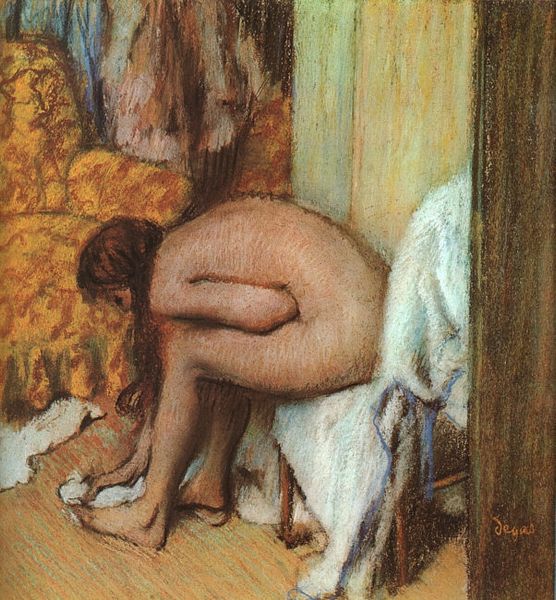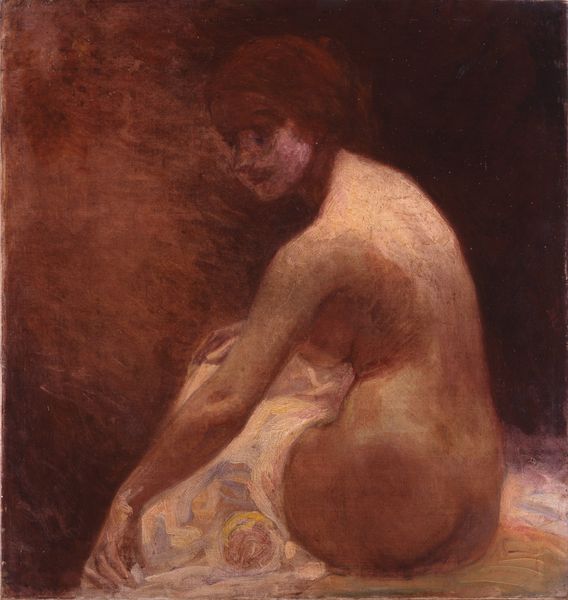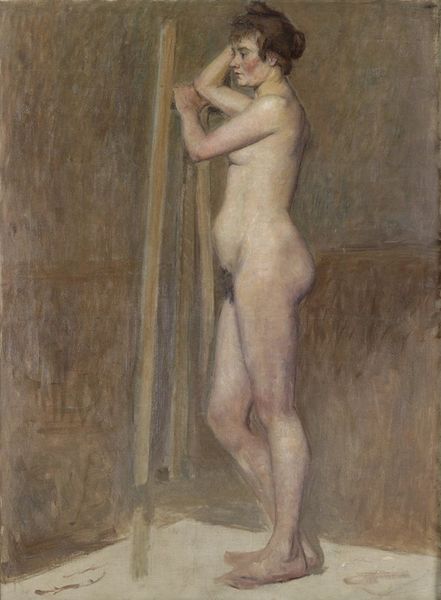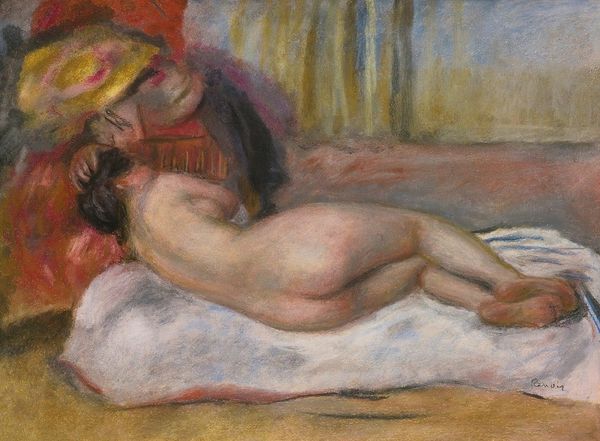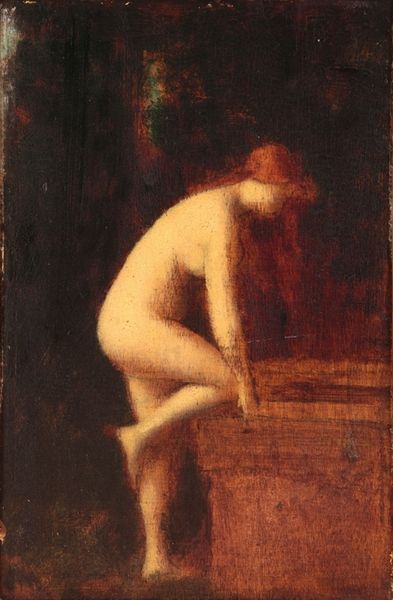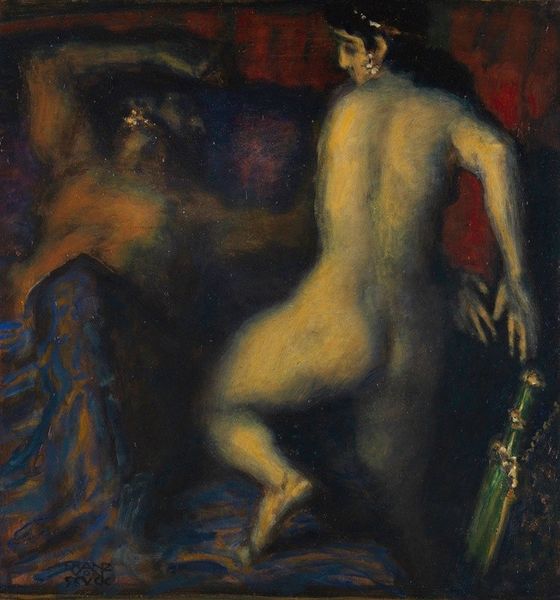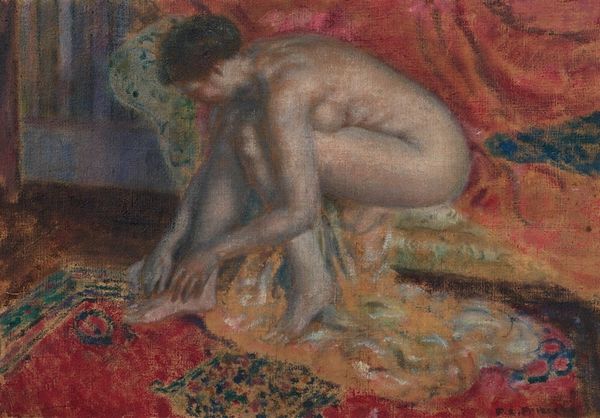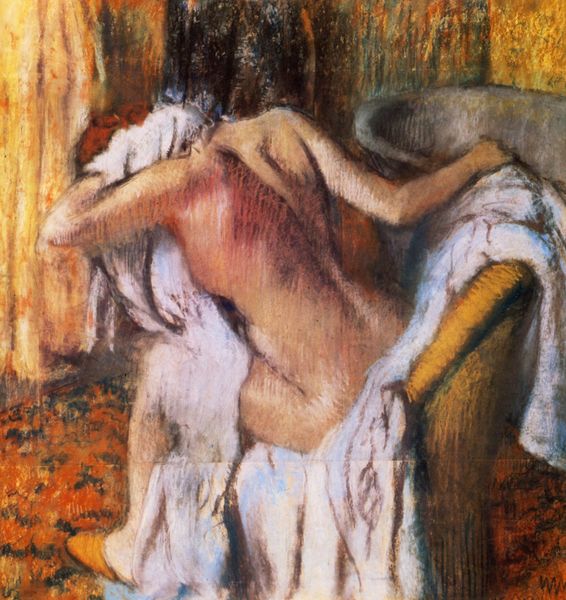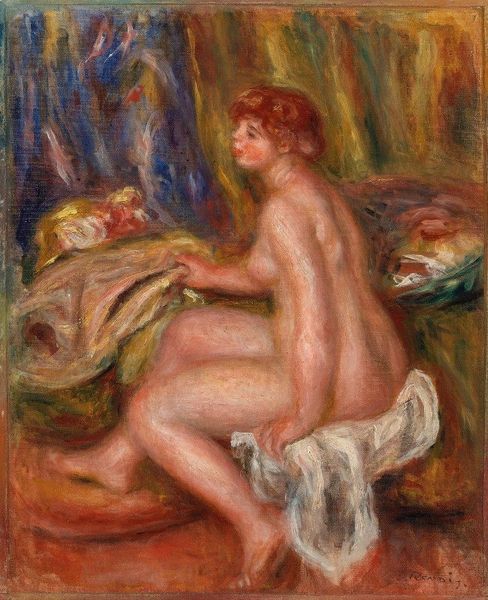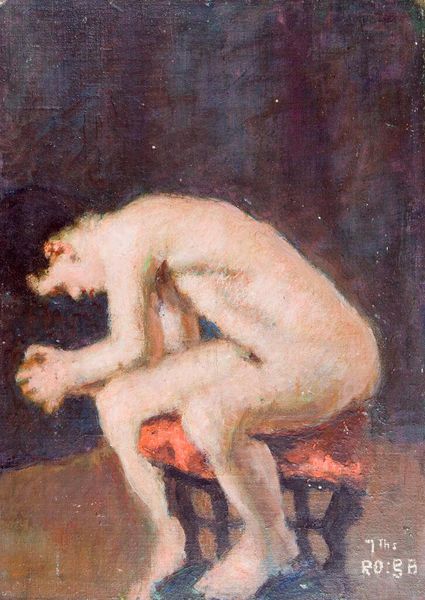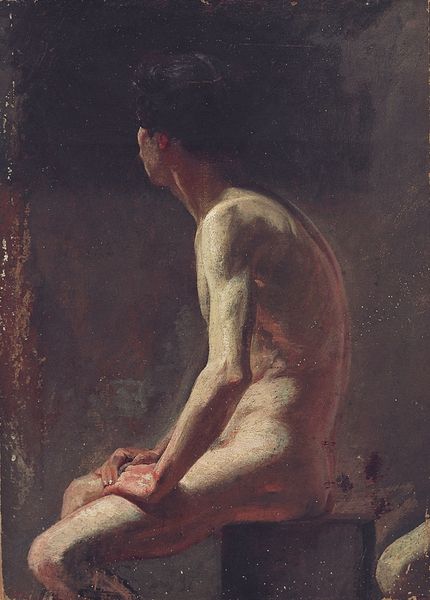
Copyright: Public Domain: Artvee
Editor: Here we have Franz von Defregger's "Rückenakt" from 1880, rendered in what appears to be pastel. The subject is a seated, nude woman, head in her hands. It strikes me as quite melancholic, even vulnerable. What do you see in this piece? Curator: This work invites us to consider the socio-political constraints placed upon women during the late 19th century. The woman's posture, with her head buried in her hands, speaks to a potential loss of agency and the overwhelming weight of societal expectations. Editor: So you're suggesting that the image, despite its apparent simplicity, actually points to something much larger? Curator: Precisely. The intimacy of the scene, the use of the nude form, were often deployed to reinforce ideals of feminine passivity and beauty dictated by a patriarchal gaze. Consider how her body is presented: is it celebratory, or does it underscore a sense of exposure and objectification? What power dynamics are at play between the artist, the model, and the intended audience? Editor: I see your point. The title "Rückenakt," simply "back nude," is also so detached, devoid of any emotional nuance... almost clinical. Does Defregger's other work offer a similar perspective, or is this piece somewhat unique? Curator: That's an important question to ask. Exploring his wider oeuvre could reveal whether this painting critiques or perpetuates prevailing attitudes toward women. Think, for instance, about depictions of women and labor at that time. Can this subject's vulnerability be seen as a quiet form of resistance against those standards? Editor: This has really opened my eyes to seeing more than just a nude figure. It's about unpacking those historical layers. Thanks for that! Curator: My pleasure. By critically examining artworks within their specific contexts, we can challenge normative assumptions and foster a more inclusive understanding of art history.
Comments
No comments
Be the first to comment and join the conversation on the ultimate creative platform.
